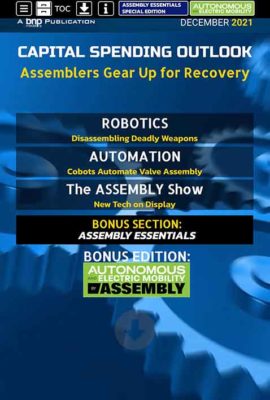Capital Spending Survey 2021: Assemblers Gear Up for Recovery
With the pandemic subsiding and consumer spending on the rise, manufacturers are investing in their assembly operations.
Read More

Copyright ©2024. All Rights Reserved BNP Media.
Design, CMS, Hosting & Web Development :: ePublishing